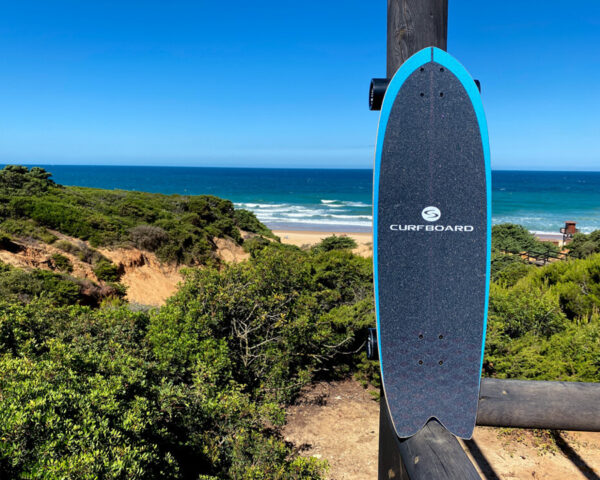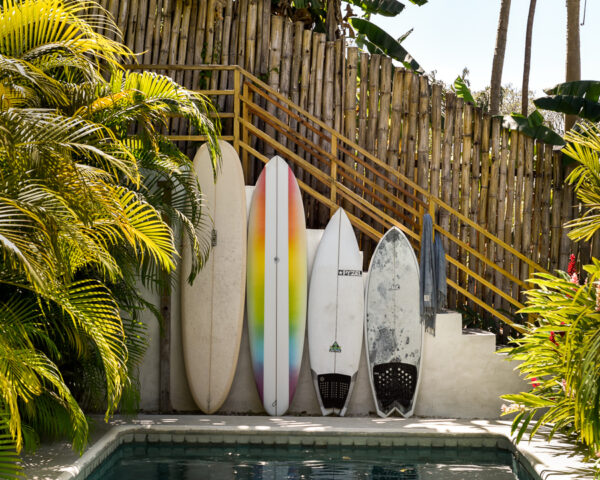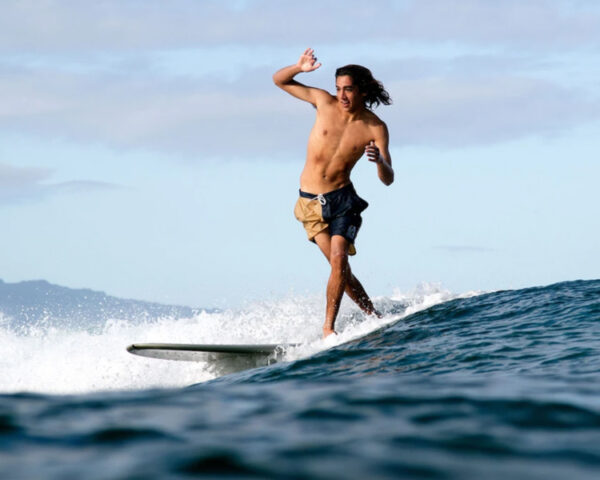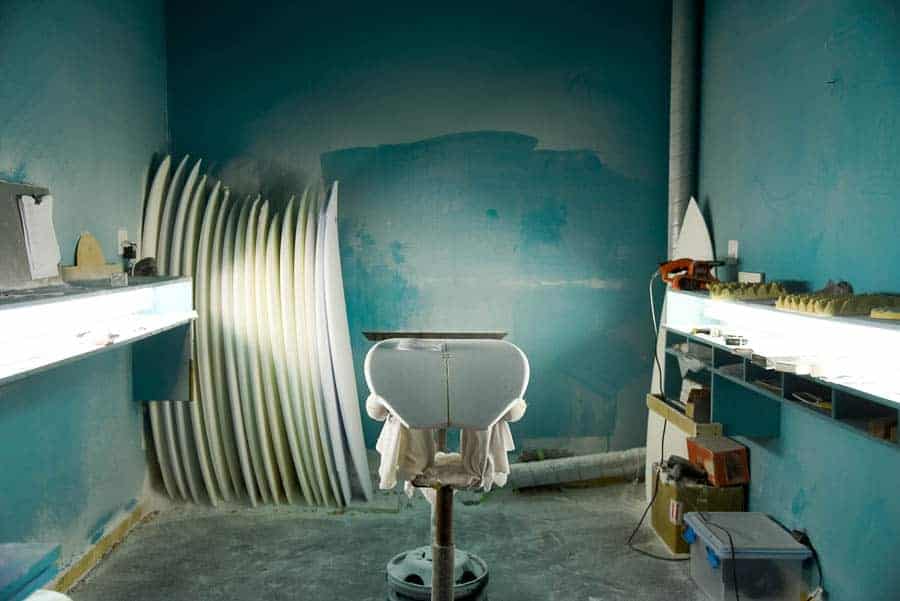
Ah, the shortboard. A lean, mean, shredding machine. There’s a reason shortboards are the most common surfboard around–the shortboard can help you up your progression game and take your performance to the next level.
In case you’re new to the realm of shortboards, these boards are the go-to for a fast, aggressive, and high-performance style of surfing. Shortboards can be pushed the hardest and enable you to surf the fastest and most critical of waves.
Because of their smaller size and performance-focused design, shortboards are best suited for the high-intermediate to advanced surfer. The typical performance shortboard definitely isn’t a good option for learning how to surf, or for surfing in small, mushy, or average conditions. If you’re currently at the beginner or intermediate level of surfing, check out our article on the best beginner surfboards.
There’s a whole lot of factors that go into choosing the right shortboard, so we’ve put together this Shortboard Buyer’s Guide to dig into how different elements of a shortboard affect performance and how the board will ride.
The Guide will cover the anatomy of a shortboard, fin selection, volume, dimensions, construction, and how to find the right shortboard for your personal style and taste. A whole textbook could be written on shortboard design, so for the sake of brevity, we’ll focus on the most important elements to help you in your search for the perfect magic stick.
We’ll also give you the lowdown on seven of the best-selling and recommended shortboards on the market today. Let’s do this!
Shortboard Buyer’s Guide
Shortboard Design
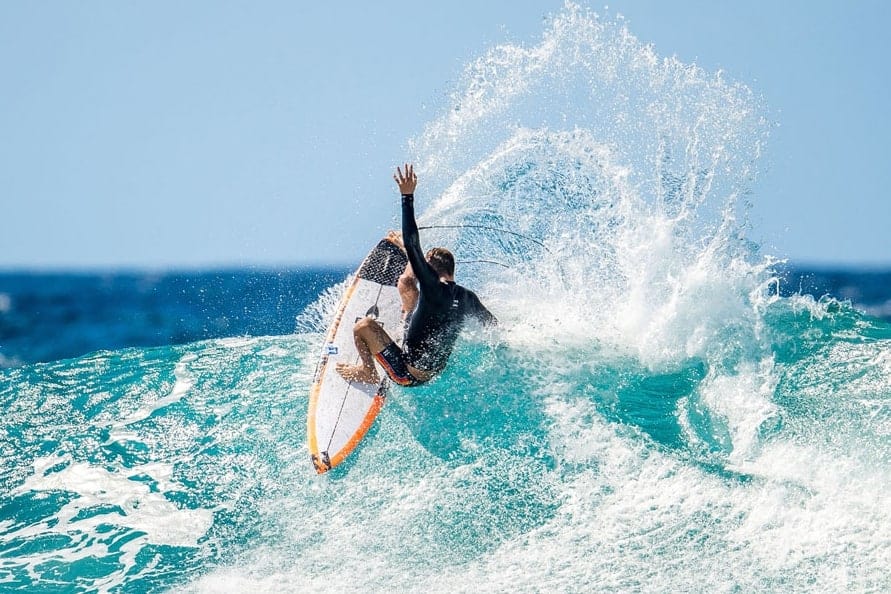
The very first thing any surfer should consider when buying a shortboard is the design. It’s really important to be realistic and honest with yourself when analyzing when, how often, and in what kind of conditions you are going to ride this board.
Knowing how different elements of a shortboard affect performance will help you choose the right board for your skill level and conditions you plan to ride it in. Here’s a general overview of the anatomy of a board and how different parts affect your surfing.
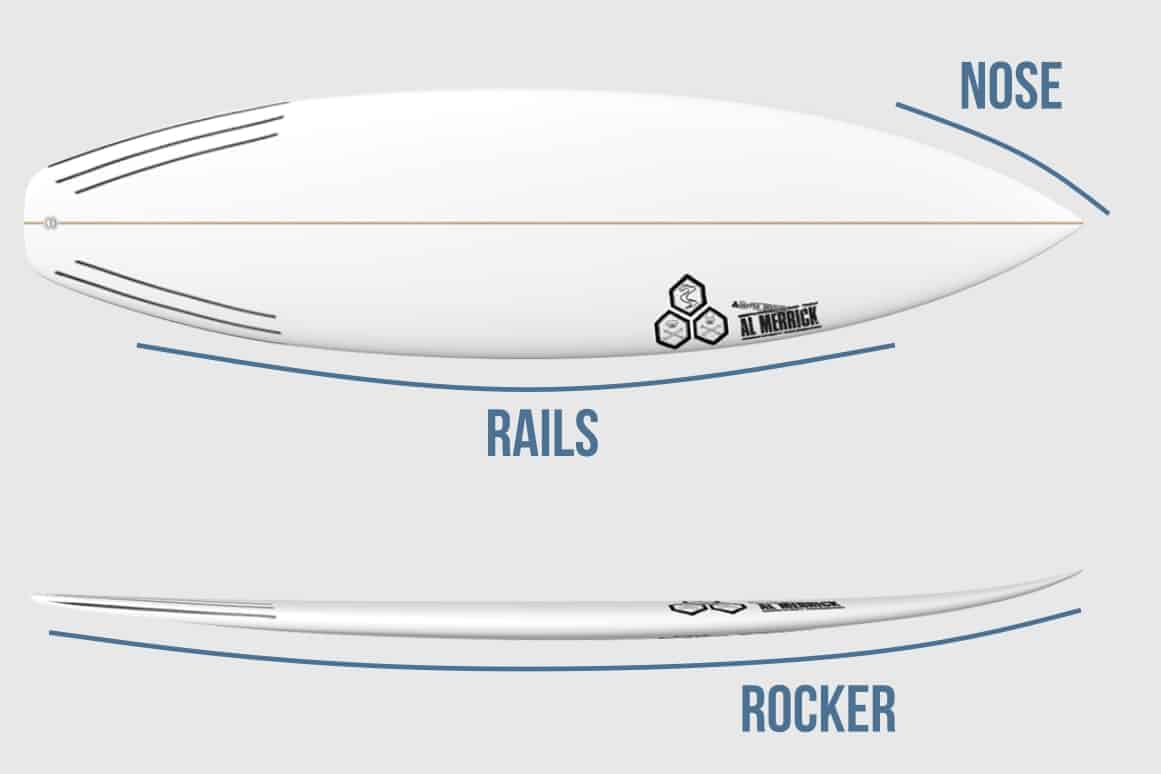
Nose
Exactly as it sounds, the nose is the front part of the board. It affects the paddling, entry into the wave, and maneuverability. Noses can be wide or narrow, flat or curved. A wider, flatter nose will make paddling and catching waves easier. With less drag, this design will allow the board to glide through flat sections of the wave. On the other hand, a narrower nose with more rocker will handle late drops better, and will be less likely to dig into the water.
Rocker
This is the curvature of the surfboard profile, and it follows the same principle as the nose. A flatter rocker will be better for flatter waves, helping the board maintain speed down the line. A more dramatic rocker, will allow tighter turns and keep the board from pearling on hollow steeper waves.
Rails
The rails are the outer edges on the sides of the surfboard. They affect tube riding, speed, and turning. There are 2 main types of rails.
- Hard Rails are more defined, and smaller in volume. They have more hold, so they are commonly found on high-performance boards.
- Soft Rails are more rounded and forgiving. They make turning easier and will perform better in smaller, friendly conditions.
Tail

The tail is the opposite end of the nose, the back of the shortboard. It’s relevant to the speed and maneuverability of the board. The main types of tails are:
- Pintail – Designed for maximum traction and control while riding a wave. They can be difficult to maneuver and aren’t ideal for small waves. They are typically found in big wave boards, because tracking and control at high speeds are more important than maneuverability.
- Round Pin – Similar in shape, but wider than the pintail. More surface area results in more lift, which allows the board to be looser, faster, and more turn-able. Ideal if you’re looking to polish your style, doing smooth turns and drawn out carves.
- Squash tail – This is the most common tail among shortboards. The edgier shape allows quick release and makes the board responsive for sharper and looser turns. More surface allows the board to plane and maintains speed, making it very versatile in a wide range of conditions and wave sizes.
- Swallow tail – This upside down V shape allows for the tightest turning arc. It pivots really easily and changes directions quickly. Ideal for smaller, clean waves.
- Square tail – The broader tail width gives the board stability, and the sharp corners dig into the wave, allowing the surfer to make sharper pivotal turns.
Shortboard Fins
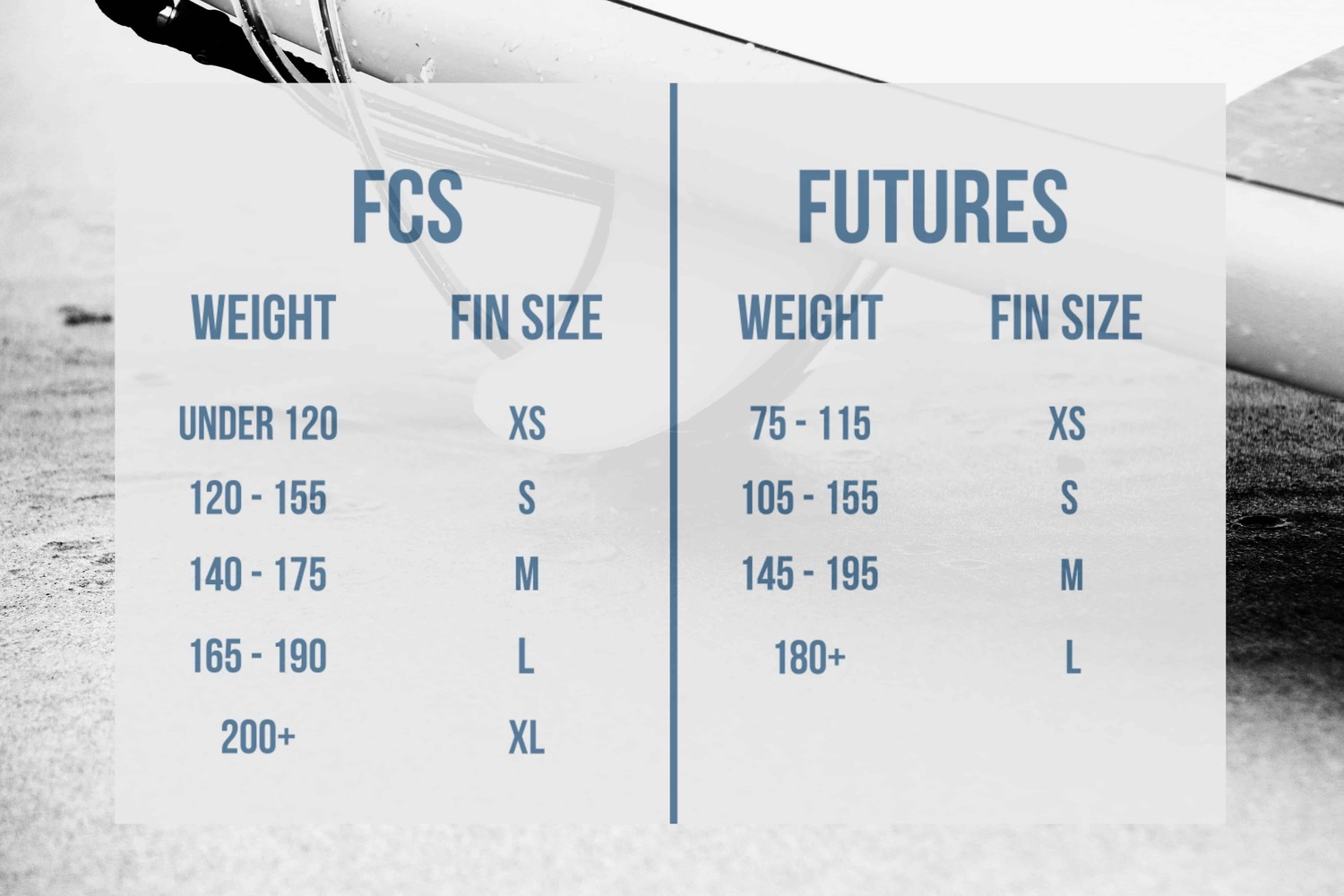
The fins are stabilizing devices that prevent the board from sliding sideways. They are sized to the surfer’s weight and there are two main fin box brands: FCS and Futures.
Once you’ve matched your size, it’s time to analyze what types of waves you will be surfing. Fins with a more vertical leading edge will perform tighter turns. Think of hollow, closeout beach breaks, where you have limited time and space to turn. More rake fins will be better for long, drawn out turns.
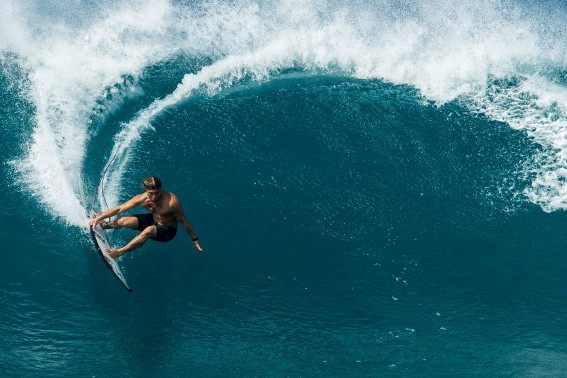
Next step, what kind of surfer do you consider yourself? Aggressive or more free-flowing? If you are pushing through your turns, in faster, more powerful waves, you will appreciate the stiffness of carbon fiber. If you’re just flowing through, you might want to try the plastic or fiberglass ones which have more flexibility and spring to them.
Shortboard Volume
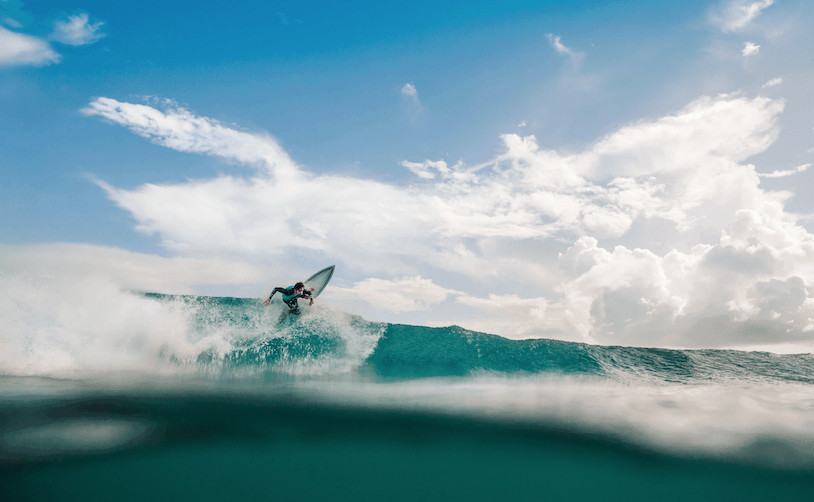
The volume of a board relates to how much the board is going to float (buoyancy), and it’s usually measured in liters. It’s the result of how much water the shortboard will displace when submerged.
In order to determine the right volume for your board, you will have to consider your body weight, skill, fitness level, and riding style.
You will need less volume for steep, hollow waves, but too little will make it difficult to catch waves and generate speed. More volume is better for flatter waves, but too much will make the board feel bulky and hard to maneuver.
If you aren’t very sure of what you need, there are different online volume calculators that will help you calculate the right board volume based on your weight, height, surf ability, fitness, and riding style.
Shortboard Dimensions
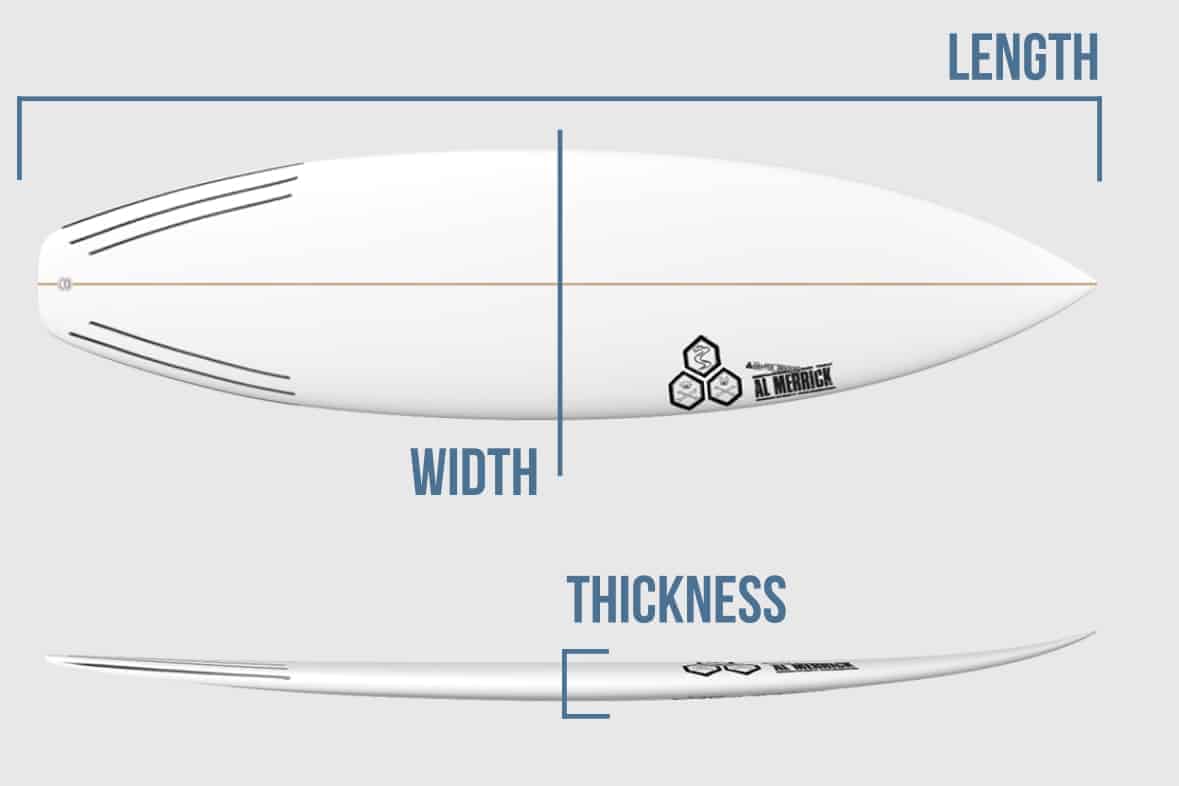
The dimensions of a shortboard are the measurements of length, width, and thickness. Now that you’ve determined which design fits you best and how much float you’re looking for, we can move on to the dimensions:
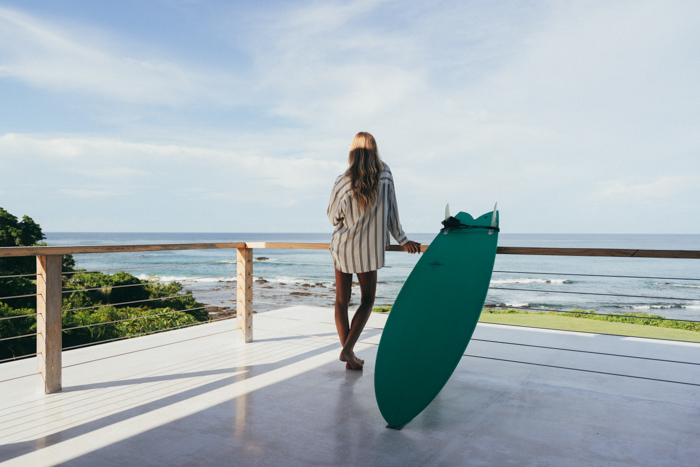
Epic surf trips made easy.
Explore luxury done-for-you surf vacations with Lush Palm Private Retreats.
Length
Measured from the nose to the tail, and typically based on your height. Taller surfers will have a wider stance, and therefore a longer board, and the opposite for shorter surfers. Although, with the right volume, you could easily ride a board up to 12 inches shorter than your performance board.
Width
This is the measurement from one rail to the other at a board’s widest point. A wider board will have more planning surface, float, and stability. It will also glide better over flatter sections. A narrow board will reduce the drag and increase the speed when pumping down the line.
Thickness
This is the third main dimension and it relates to the floatation of the board. It is often overlooked, but it is important to realize that a small difference can have a huge impact on the overall performance of the board. Thicker rails will give you more push, which can be a plus for soft waves but going too far can result in a board that is hard to turn because the rails are too thick.
Surfboard Construction
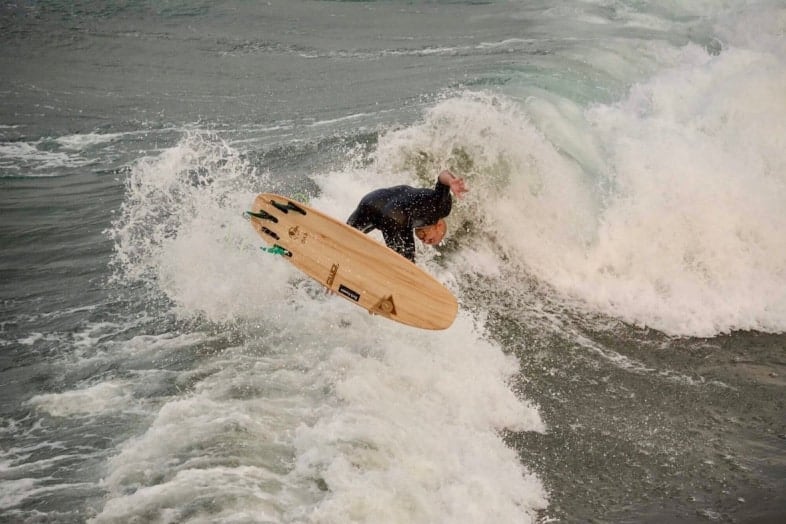
Different surfboard materials will affect the strength, durability, weight, and buoyancy of the surfboard, which will, in turn, make a difference in the overall feel of how the board performs. Here’s a basic overview of surfboard construction: the core of most boards is made of a type of foam, which is shaped and then covered by a harder layer, traditionally fiberglass. Through the center of the foam runs the stringer, which is commonly a strip of wood that adds strength and rigidity.
In the past, surfboard construction was limited to a couple options, but nowadays there are many different combinations of materials used to make surfboards. We’ll save you the full breakdown (as that would be enough info for a whole other article), and focus on the most common types of shortboard construction.
The three main types of foam are a polyurethane foam, also known as poly or PU, expanded polystyrene foam (EPS), and Polystyrene foam (PS). The two main types of surfboard resins are polyester resin and epoxy resin.
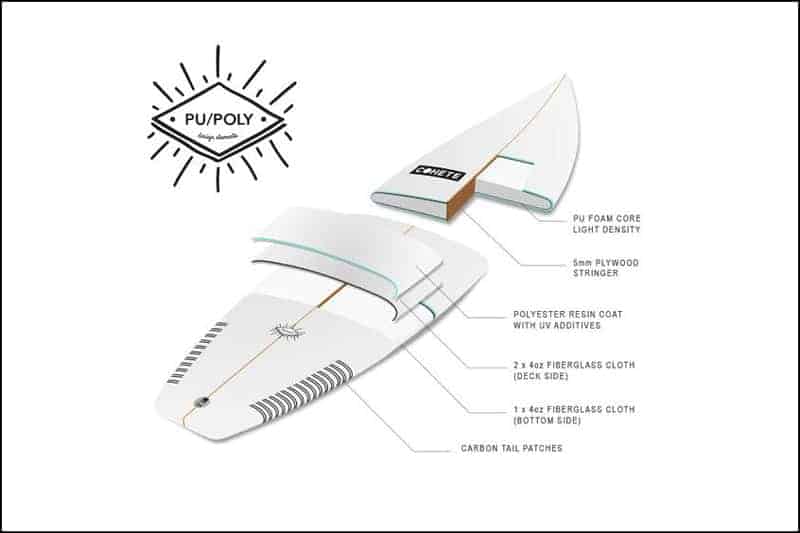
A polyurethane blank and polyester resin (PU/PE) is the oldest and most traditional surfboard construction used by many shapers and surfboard brands. Expanded polystyrene foam (EPS) or polystyrene foam (PS) with an epoxy resin are a more recent addition to surfboard construction and are typically molded by machines.
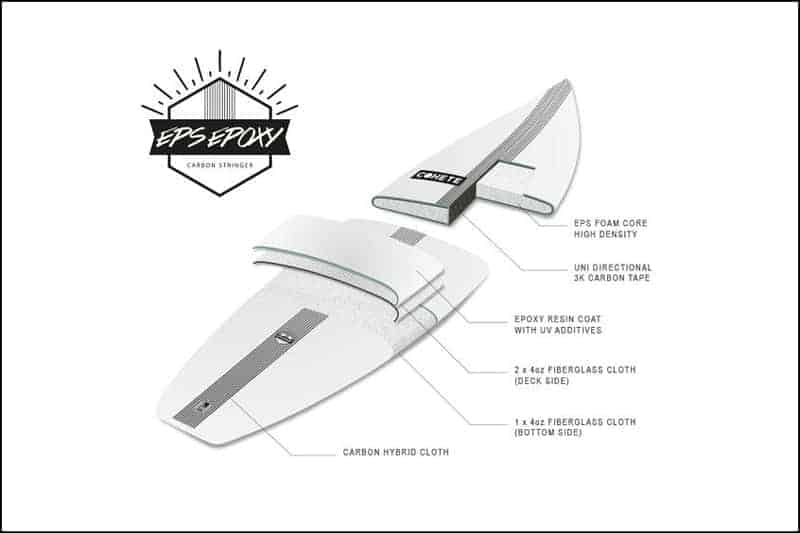
When comparing the two, boards made with traditional poly are a bit heavier than epoxy boards and have more flex. Since poly boards sit lower in the water, the rails carve through the face of the wave and have better hold on hollow waves and barrels. This also keeps them from bouncing around on choppy conditions.
On the other hand, Expanded Polystyrene (EPS) boards are much lighter and ideal for surfers who want to step up their air game and sharp turns. Since they sit more on top of the water, they are better at generating speed and gliding through flat sections. This has made them a good option for small wave boards. Epoxy resin is also stronger and more durable than polyester resin.
Best Shortboards
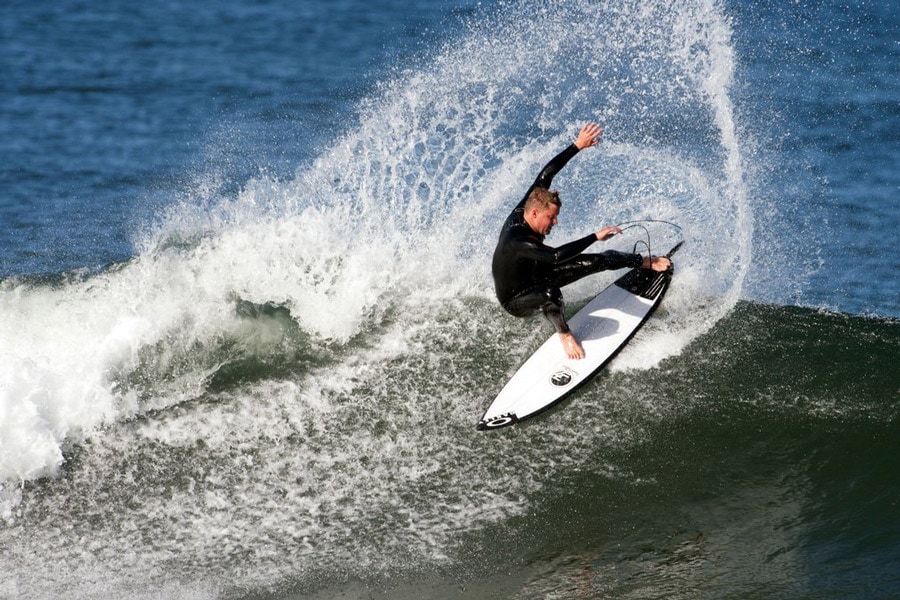
Whether you’re looking for inspiration for your own custom shape, or you want to look through what’s already on the racks, here are some of the most recommended and best-selling shortboards on the market.
Degree 33 – All Terrain Vehicle
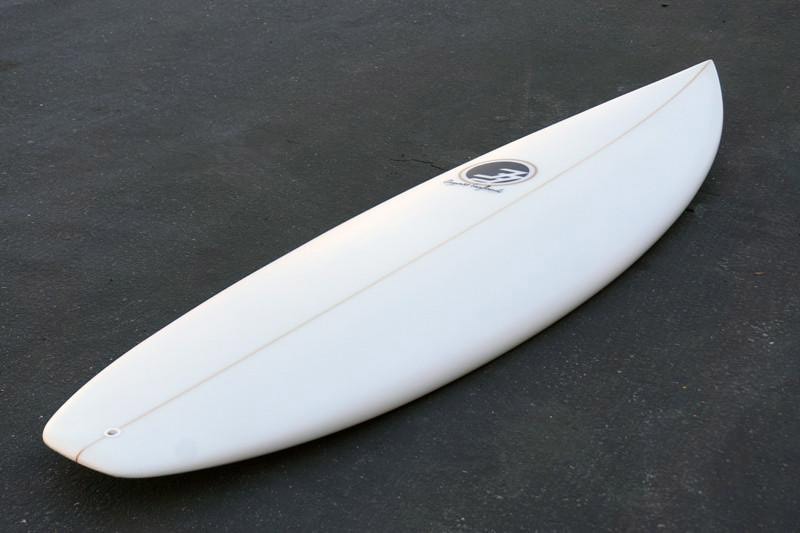
If you’re looking to buy a shortboard online, you should definitely check out Degree 33 Surfboards. With free shipping in the contiguous United States and a solid 33-day “Ride it and Love it Guarantee” you’re bound to be stoked with your new shred sled. Featuring a moderate nose and tail rocker, medium-full rails, and well-distributed volume, The All-Terrain Vehicle is the perfect daily driver surfboard if you’re looking for a go-to shortboard that works in a variety of conditions.
Channel Islands – Flyer
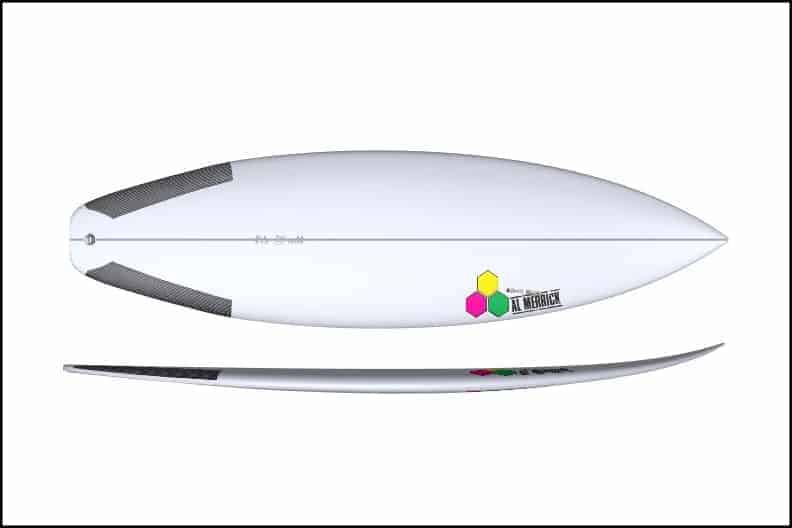
Channel Islands’ all-time most popular design, solved the dilemma of surfers who needed speed and flow in smaller waves, while maintaining high-performance. The New Flyer is most ridden as an everyday board for everyday conditions.
Hayden Shapes – Hypto Krypto
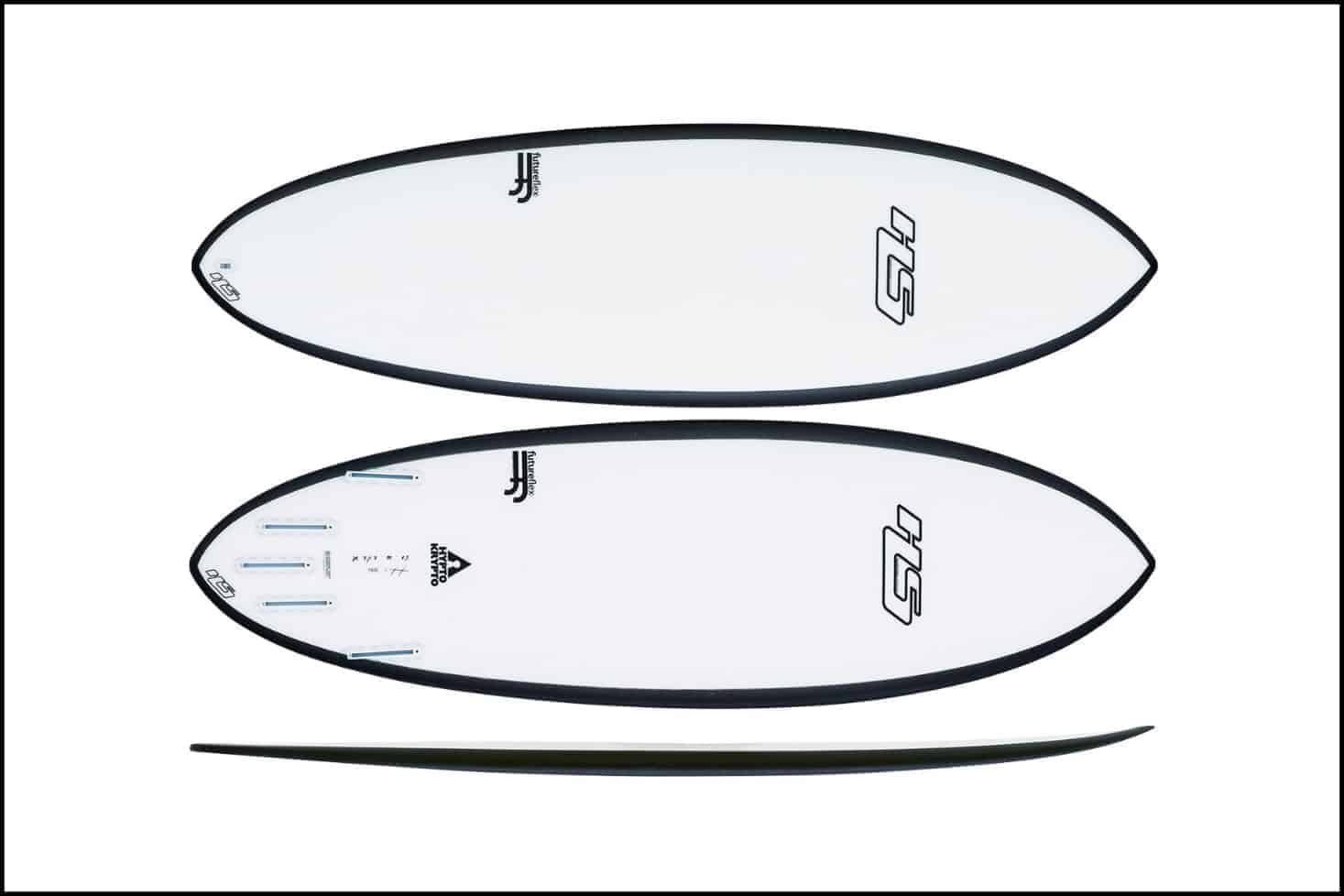
Awarded Australia’s Surfboard of the Year, the Hypto Krypto is a go-to board for surfers looking for carving turns while flowing down the line.
Lost – Quiver Killer
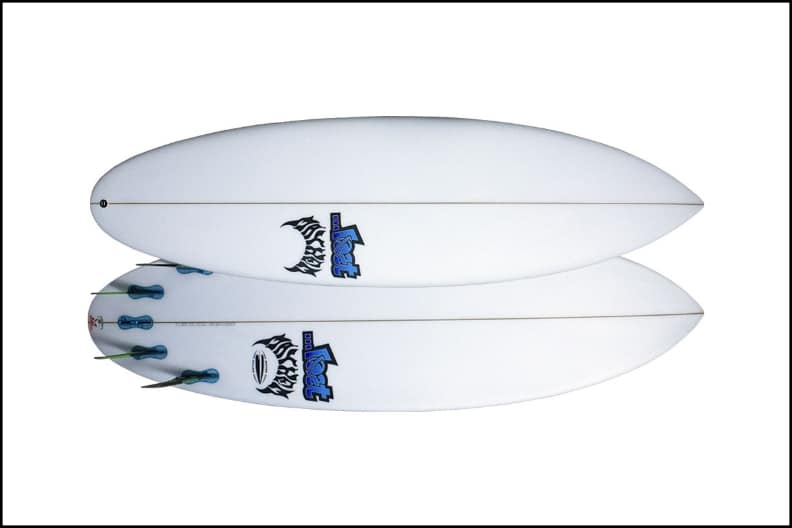
This cure-all for any and all conditions is the perfect balance between a user-friendly and high-performance shortboard. The surface area and volume combined with the round tail make the Quiver Killer a great option for anything from 2ft waves to double-overhead barrels. And as implied in the name of the model, it very well might help you thin out the need for a full-on surfboard quiver.
JS Industries – Blak Box II Round Tail
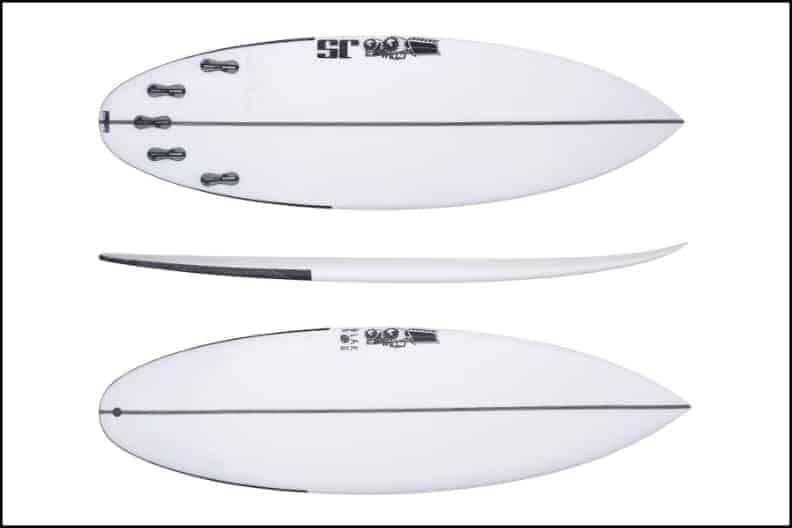
From slow and mushy, to punchy and hollow, the Blak Box 2 round tail is a great option as a daily driver. The BB2 has a low entry rocker, flat exit rocker, and medium to full rails which make it super versatile in all sorts of conditions.
Firewire – Spitfire
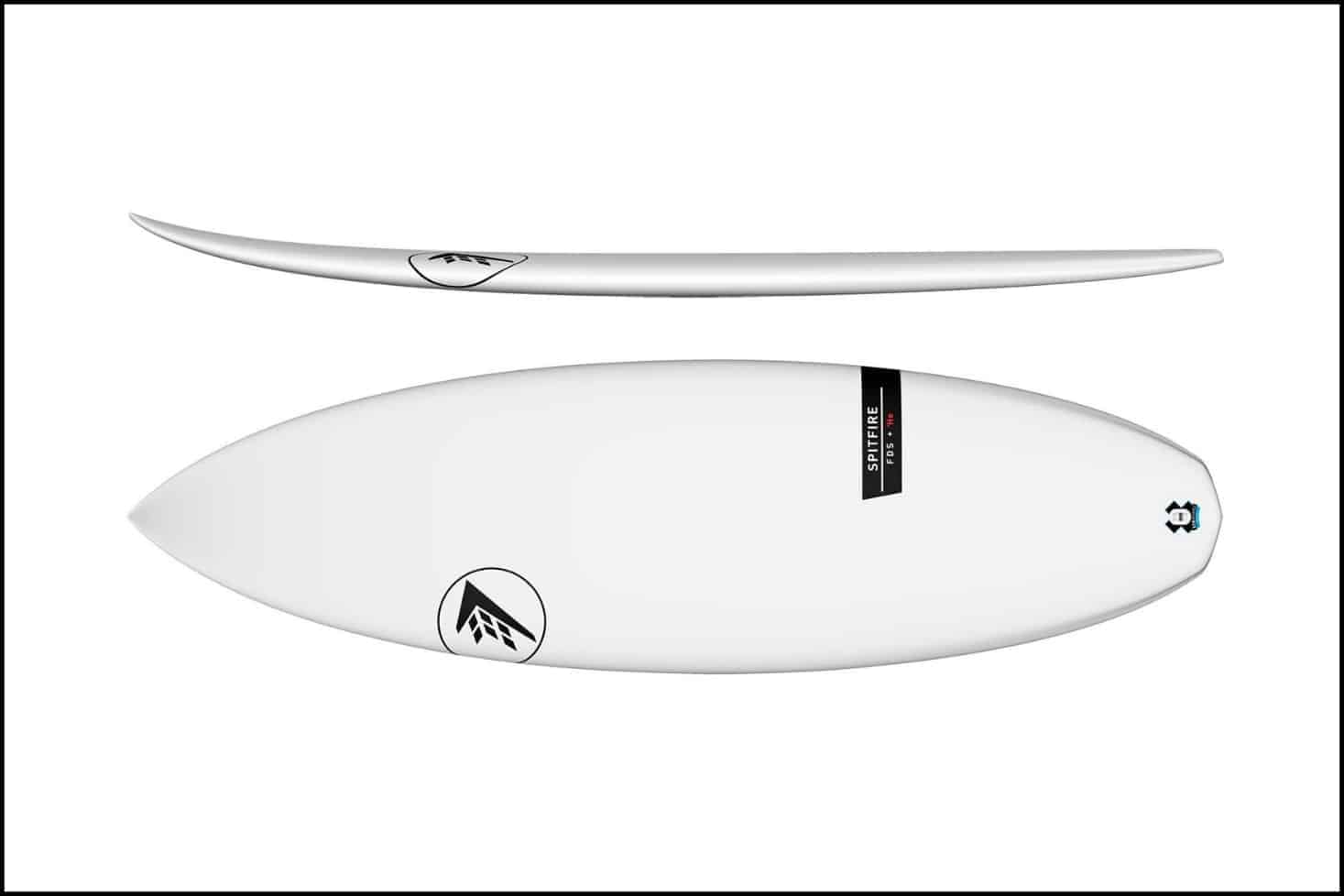
With the tail bite of a thinner shortboard, without losing any speed or floatation, the Spitfire is ideal for performance surfing in forgiving conditions. Anywhere from 2ft to 6ft waves.
Pyzel – Phantom
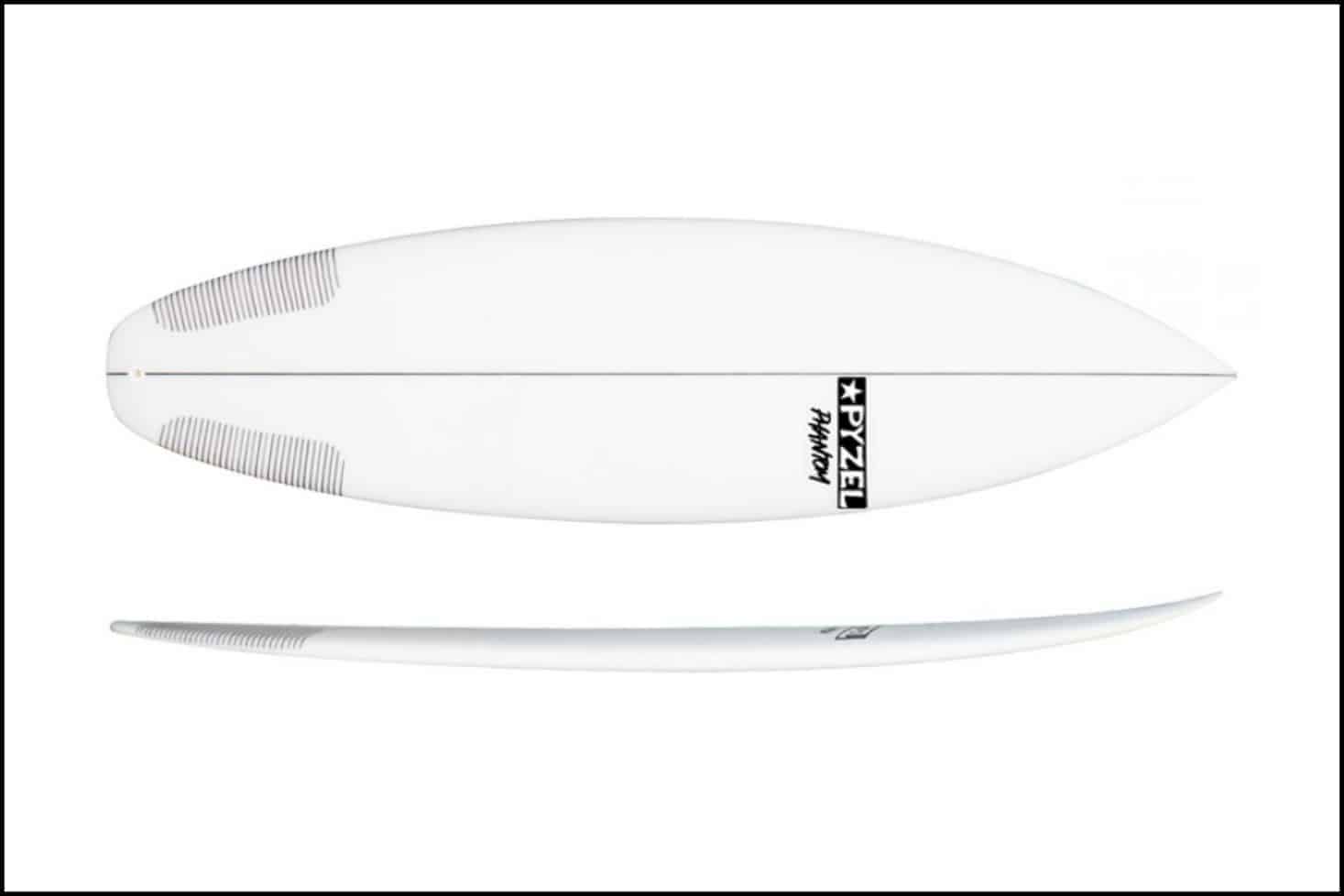
The high volume and flattened out rocker, combined with full thinner rails, make the Phantom your daily driver with a high-performance edge. Best in waist high to overhead waves of any kind.
Super Brand – Magic Mix
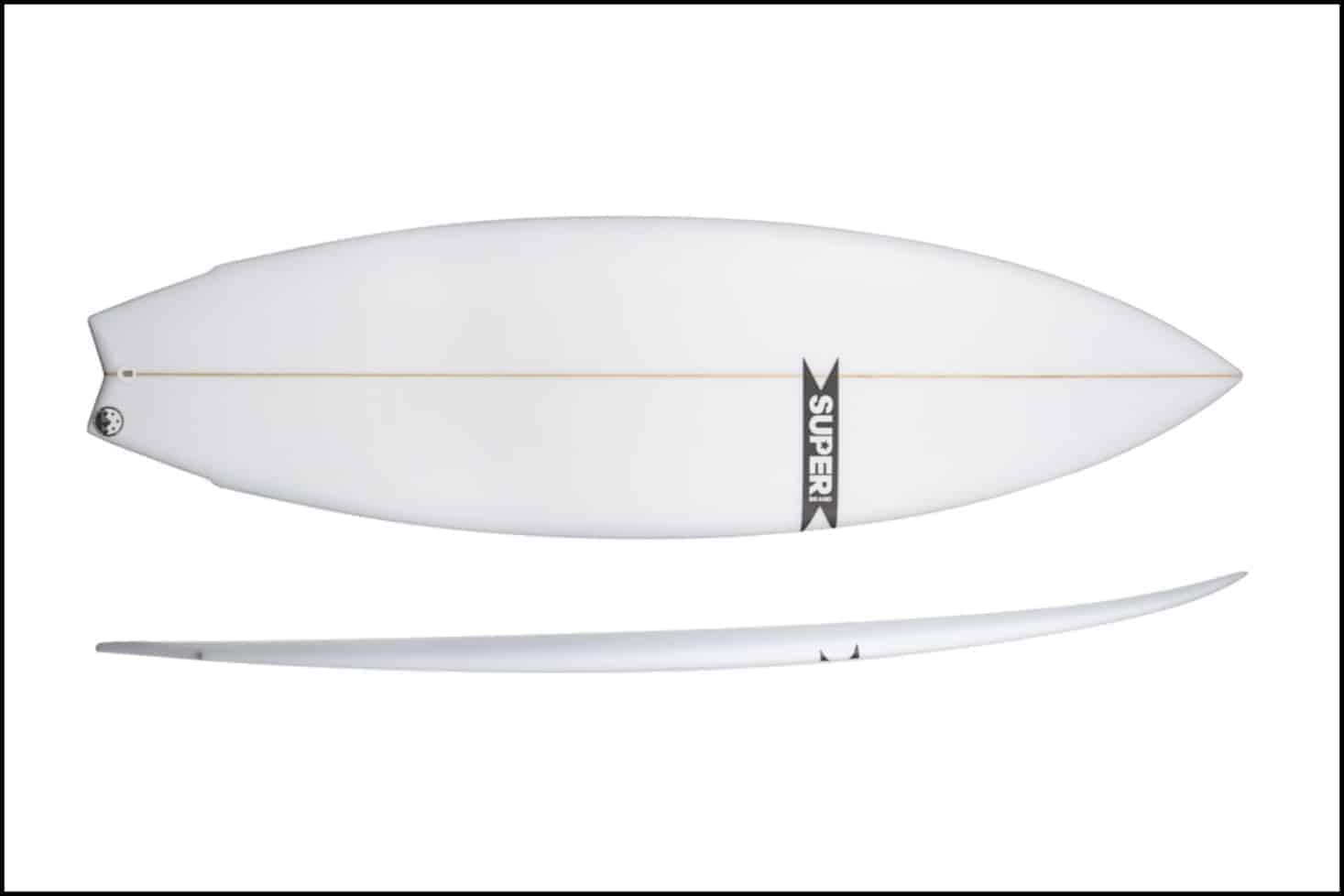
As the name indicates it, the Magic Mix is a combination of elements that go into Super Brand’s most popular surfboards. The wide nose combined with the medium rocker make it ideal for both flat sections and steeper take offs.
Have any questions about shortboards?
Let us know in the comments below!
For more surfboard goodness, check out:
14 Surfboard Brands with Epic Style >>
Surfboard Shapes 101 / The Ultimate Guide to Modern Surfboards >>
Longboard Surfboard Roundup / 34 Badass Longboards for Your Quiver >>
